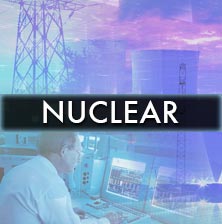The following is a small selection of items recently published by EPRI. To view complete lists of your company-funded research reports, updates, software, training announcements, and other program deliverables, log in at www.epri.com and go to Program Cockpits.

Intended for both experienced and new nuclear plant technicians, this software demonstrates the disassembly and re-assembly of a Reactor Core Isolation Cooling Terry Turbine in 3-D animation. It draws on the knowledge of industry Terry Turbine maintenance/inspection experts.

This software determines the megawatt capacity of distributed energy resources (DER) that can be accommodated on a distribution feeder, distribution system impacts from DER, and necessary grid upgrades based on those impacts.

Multispecies conservation at landscape or ecosystem scale recognizes the fundamental ecological fact that species do not exist in isolation and can potentially reduce the need for future listings under the Endangered Species Act. This report examines the strengths and weakness of multispecies management of endangered species.

This report evaluates similarities, differences, and effective applications for two models for fossil power plant asset management programs—EPRI’s Equipment Reliability Model and the Process Safety Model.

To effectively evaluate the role of wind and solar generation in a low-carbon energy system, a model must capture the economic effects of their hourly and spatial variability. This paper proposes a “representative hours” modeling method that involves strategically selecting particular hours during a year with maximum and minimum values for wind and solar generation and load.

In this study, researchers designed a thermal energy storage system using phase-change composite materials and evaluated the storage capacity at different operating conditions for a residential water heater application. They also compared the economics of the storage system with that of a residential hot water storage tank.

Desalination technologies such as reverse osmosis and thermal distillation are energy- and cost-intensive. This study examines the feasibility and costs of using directional solvent extraction with abundant, low-grade waste heat from power plants as an alternative desalination technology.

There is consensus among economists that cap and trade can reduce society’s overall costs of CO2 emissions reductions by replacing expensive reductions in one region with cheaper options in another. This research indicates that in the power industry, interactions between emissions permit trading and electricity markets can result in an uneven distribution of costs and benefits among trade partners.

Burning selenium-containing fossil fuels at power plants releases small amounts of selenium, some of which combines with oxygen to form selenium dioxide. This research investigated the potential of detecting selenium dioxide or other selenium compounds in gas and particle phases using mass spectrometric and infrared laser absorption techniques. It involved laboratory tests and analysis of samples collected from a coal fired power plant.

The rapid fall in prices of solar panels and battery storage have led some to suggest that it will soon be advantageous for consumers to create off-grid power systems. This paper investigates the costs, reliability, and tradeoffs of off-grid solar/storage relative to grid-connected versions.

This study assesses the technical and financial feasibility of large-scale commercial component manufacturing with powder metallurgy/hot isostatic pressing technology. It also evaluates the development of a Center of Excellence to provide expertise, laboratories, and capabilities to design, evaluate, research, scale up, and produce large components.

This report summarizes progress with American Society of Mechanical Engineers (ASME) code changes and initiatives related to welding and repair activities in the nuclear power industry. The information can be used to plan for timely implementation of code changes. The report will be updated annually.